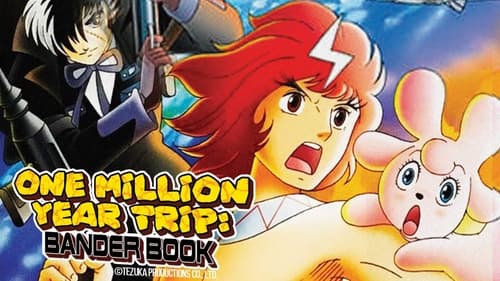Sammy-Jo Cervantes
There are moments that feel comical, some horrific, and some downright inspiring but the tonal shifts hardly matter as the end results come to a film that's perfect for this time.
Alberto Venturi
In Italy, this 1978 film by Osamu Tezuka was first shown on the public TV channel (Rete 1) one Christmas afternoon (either 1980 or 1981) and then repeated two or three years later.The main character is Bandar, a 17-year-old boy from Earth, who lives on a distant planet populated by pacific humanoid shape-shifters who feed exclusively on vegetables and animal tails. Naturally, violence is bound to reappear as invaders from a certain specific planet launch their first attack on Bandar's new world. The first part of the movie is an astonishingly effective crusade against violence and war. Then, disappointingly, we find ourselves hit by a never-ending salvo of rather feeble gags, staged by various caricatures of clichéd horror figures that could manage to amuse a child or two, interspersed with scenes inspired by some such movies as Star Wars Episode IV, Superman, Westworld and who knows what else. This is followed by another disappointing digression - a very forgettable child-orientated lecture on evolutionary biology. As the film proceeds, the number of plot holes and inconsistencies escalates, accompanied by action scenes and fights that look increasingly implausible. The final part is an attack carried out by Tezuka not only against pollution, but also, somewhat unexpectedly, against technological development as a whole.A number of characters here have the same features as those in other films/series by Tezuka. This is in fact typical of the late God of Manga and it has been likened to the way celluloid film-makers ask their own favourite actors to play ever different roles in ever new movies. In "Bandar Book", the main parts are played by some such "actors", with the exception of Blackjack, one of Tezuka's most intriguing characters. Instead of being a surgeon, Blackjack is here a space pirate, but his nature remains as unpredictably double-sided as in his original manga. Other characters appear whose faces are familiar to millions of viewers across the world. O-cha-no-mizu impersonates a heinous hunchback, and Higeoyaji is the barman of a hybrid sci-fi/western saloon, where in the end even Tetsuwan Atom (AstroBoy) and a self-portrait of Tezuka himself make very brief appearances.There are a few special effects that were obviously state-of-the-art in 1978, the most striking of which is probably the fog effect -- a truly amazing thing to see in an animation movie in those days. On the other hand, the digital restoration can only help to uncover the graphic limitations and defects of this piece of ancient handiwork. In sum, despite the evident efforts and good intentions, this work is in many respects markedly inferior to Tezuka's everlasting masterpiece "Hi no Tori - 2772 ...". But nonetheless unmissable.







